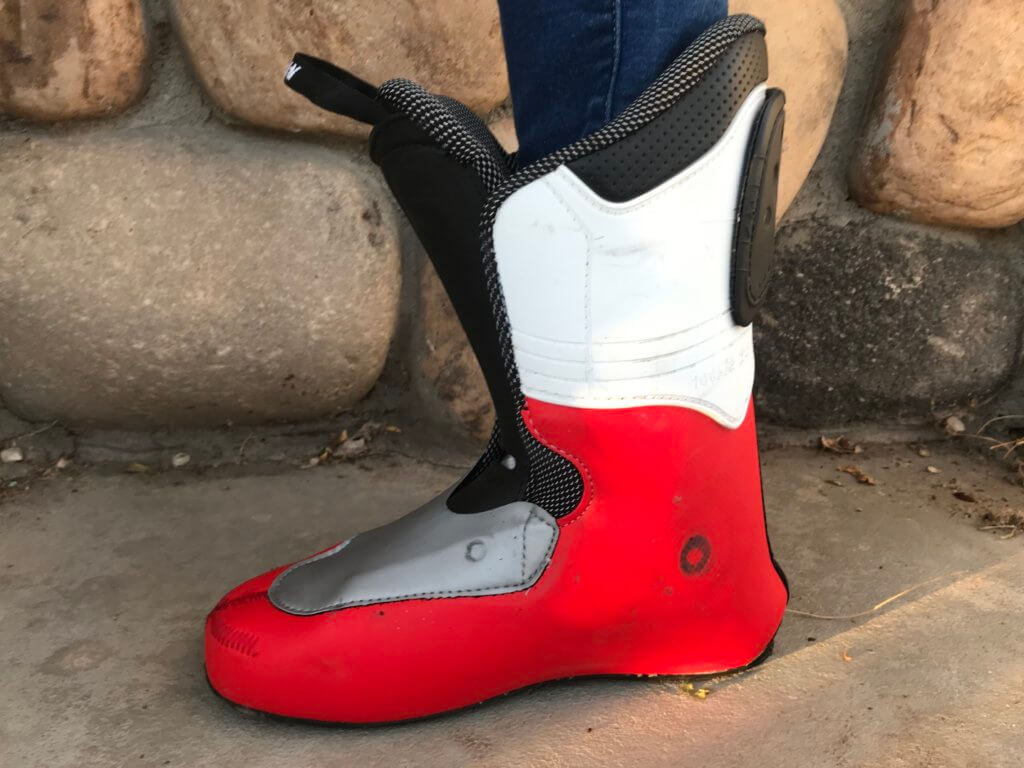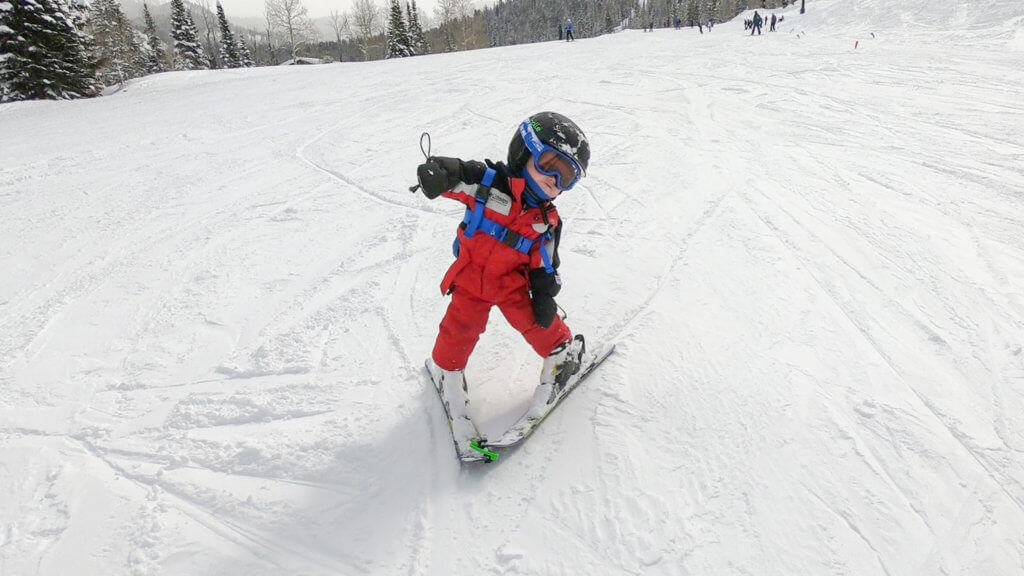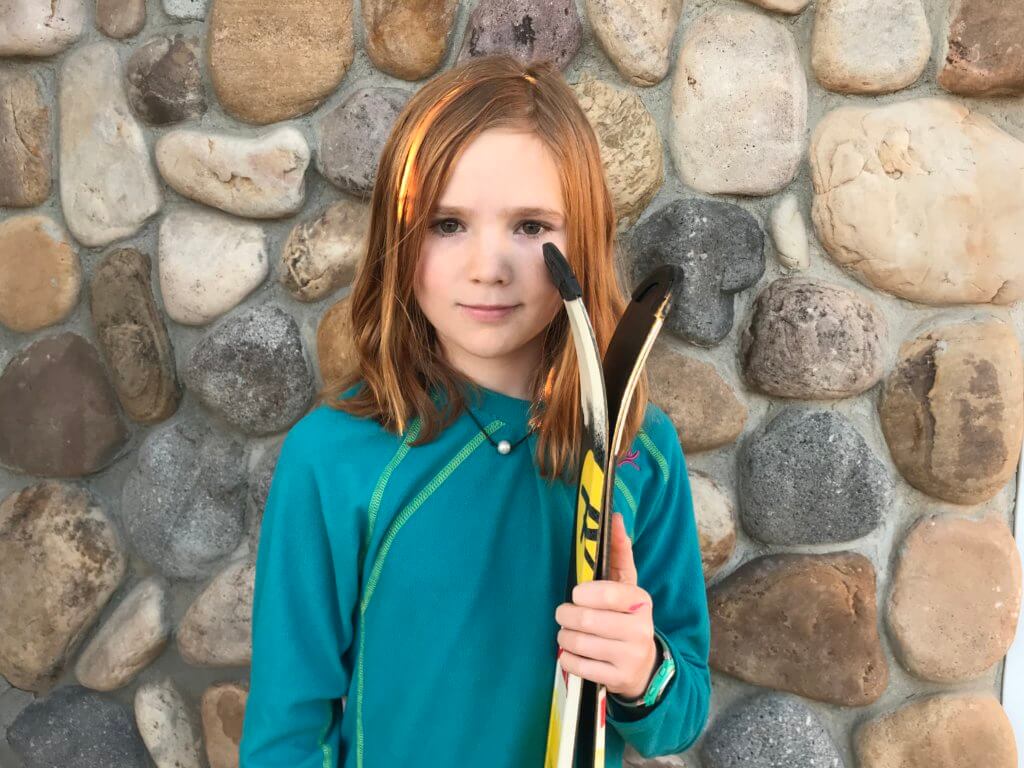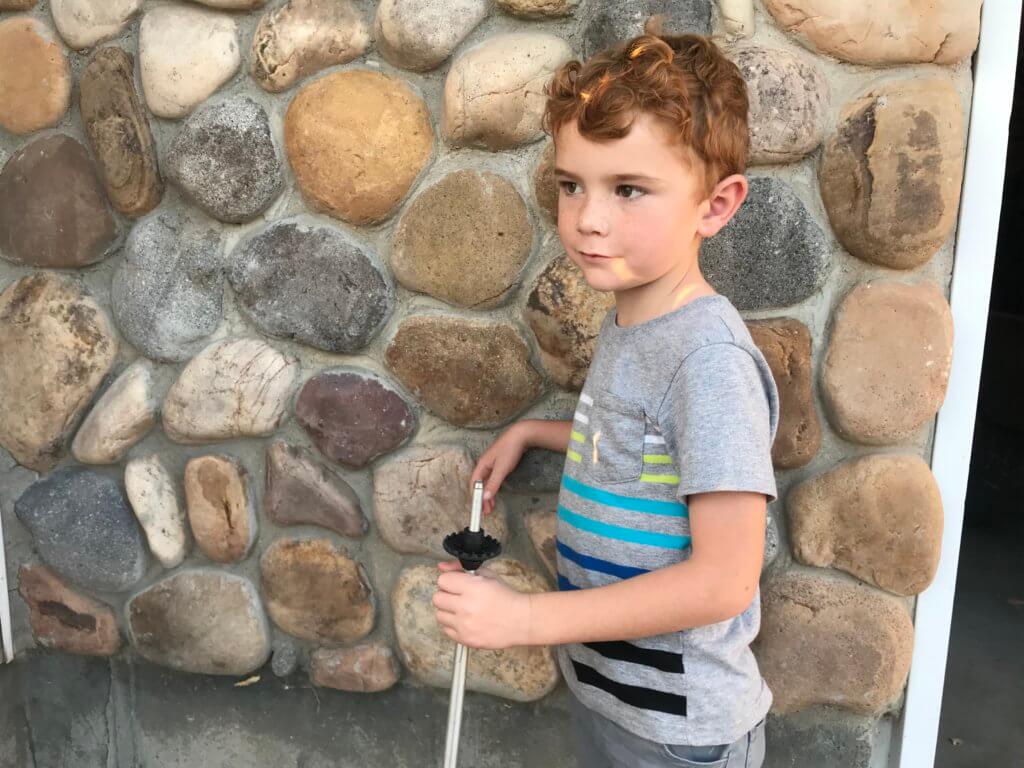Kids are constantly growing, and sometimes, that can leave parents feeling like they are constantly buying new gear (especially in families with more than one kid).

Trust me, I absolutely understand. With five kids of my own, someone in our family always seems to be outgrowing their ski gear. So I’m going to share with you how to know when your kids need bigger ski equipment, what gear needs to fit just right (and what can be a little big or small), how to save money on ski gear, and tips for making your gear last a bit longer.
Ski Boots
Often overlooked, ski boots are one of the most critical pieces of ski equipment in terms of fit. If your kids’ ski boots are too big, they won’t be able to maneuver as well since their feet will be sloshing around. If their ski boots are too tight, their feet will get tired easily, cold faster, and possibly get blisters.
How to know if your kid’s ski boots fit properly?
Fitting ski boots well can be a bit tricky, especially on younger kids. Since ski boots are very stiff, kids often equate that stiffness with being too small, even when a boot is fitting well.

To see if your kid’s ski boots are too small, the first thing that you need to do is to remove the liner from the boot. Once the liner is out, have your child try it on with their normal ski socks on. While this doesn’t tell you everything, you’ll get a good idea of if their boots are entirely too small if the liner is really tight.

With the liner still out of the boot, have your child put their foot into the boot shell and scoot their foot forward until their toes just barely touch the front of the boot. Next, you’ll need to put your hand in and feel if they have enough room. A good rule is that you should be able to fit 2 fingers between their heel and the back of their boot (¾ to 1 inch of space). If you have more or less space, you need to find a new pair of boots.
Pro tip: You can actually buy kids’ ski boots that are adjustable and fit multiple sizes. We’ve had some for years. We have been very impressed with how well they work and love that they have saved us tons of money on boots for our kids. This type of boots work well for beginner and intermediate skiers.
Helmets
Helmets are one of the easiest pieces of ski gear to get the perfect fit. A good helmet should fit snugly on your child’s head and not twist or wobble around. If a helmet has to be forced on or seems like it sits high up on their head, it’s probably too small.

To check if a helmet is too big for your child, put it on them and have them shake their head from side to side. If the helmet stays put, it’s the correct size. If it wiggles around, get a smaller helmet. If your child doesn’t have a helmet that fits correctly, it won’t do its job right, so a good fitting helmet is essential.
Pro tip: When buying a new helmet for your child, look for one with an adjustable dial at the back. This dial allows you to have a custom-fitting helmet and also allows room for growth through several seasons.
Skis
While this is probably the first thing you think of when it comes to gear for your kids, it’s actually the most forgiving piece of equipment. While it’s critical that your kids have boots and helmets that fit just right, it’s really okay for skis to be a little bit short or long.

Ideally, kids’ skis should hit right around the nose; however, anywhere in the face area is just fine. For kids who are really young or just learning how to ski, it’s actually easier for them to have shorter skis that are around chest height.
If you’ve got a child who’s going to be racing or is a more advanced skier, then a longer ski is just fine.
As a general rule of thumb, shorter skis are easier and make turning and maneuvering simpler. Longer skis require more skill and strength.
Poles
Ski poles for kids are totally optional, and I always recommend that kids learn to ski without poles.

Once your child is ready to ski with poles, they are really quite easy to size. Simply put the pole upside down, put their hand under the basket, and look at the angle of their arm. If their arm is close to a 90-degree angle, then you’ve got a good size.
How to save money on kids’ ski gear
Of course, you can head to your local ski shop and buy everything new, but if you’re looking to save money on your kids’ skis, there are a lot of other options available to ski families.
Used Ski Gear
If you want to save money on your kids’ ski gear, starting early in the season can save you a lot of money. In the late fall, ski swaps abound, and there are plenty of shops that specialize in used gear. Most rental shops sell some of their gear every year, so always ask if they have skis for sale – even if you don’t see any displayed.
We’ve gotten most of our kids’ gear used, but we only buy gear that’s in pretty good shape. That means that our oldest gets nice used gear just about every year since he is growing so fast, and it’s good enough quality that it can be passed down through all five of our kids.
Season Rental Programs
Check into season-long rental programs. These programs allow you to rent your gear for the entire season and return it in the spring. This is a great option if you’ve got a kid who’s growing fast since most of them allow you to exchange sizes as the season goes on.
How to help your kids’ ski gear last longer
There are a few simple things that you can do every time you ski, to ensure that your kids’ ski gear lasts as long as possible.
- Always buckle boots up for storage. This helps them retain their shape and prevents buckles from getting caught on something and breaking.
- Wipe off and dry the bottom of your kids’ skis every time. This helps protect the edges from rust that can form from moisture or dirt.
- Dry gear every time. Don’t store your wet ski boots in the garage, or they’ll just turn to ice and your next ski trip will be miserable. Also, make sure that helmets, gloves, pants, and coats are all completely dry before storing. Not only does this make your next ski trip more pleasant, but it helps prevent mold and odors from accumulating in your clothing, helping it to last longer.

